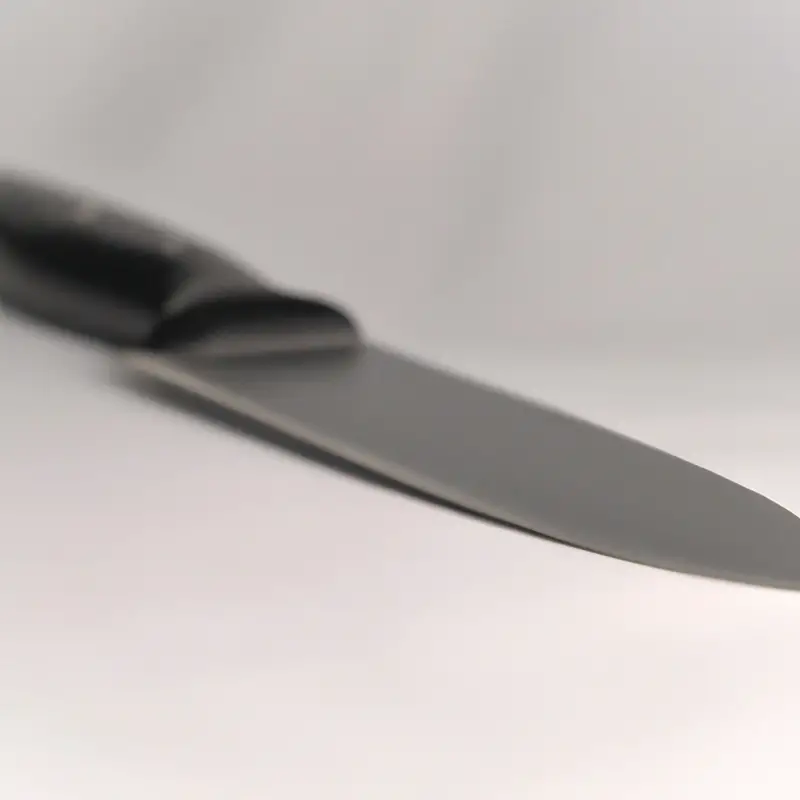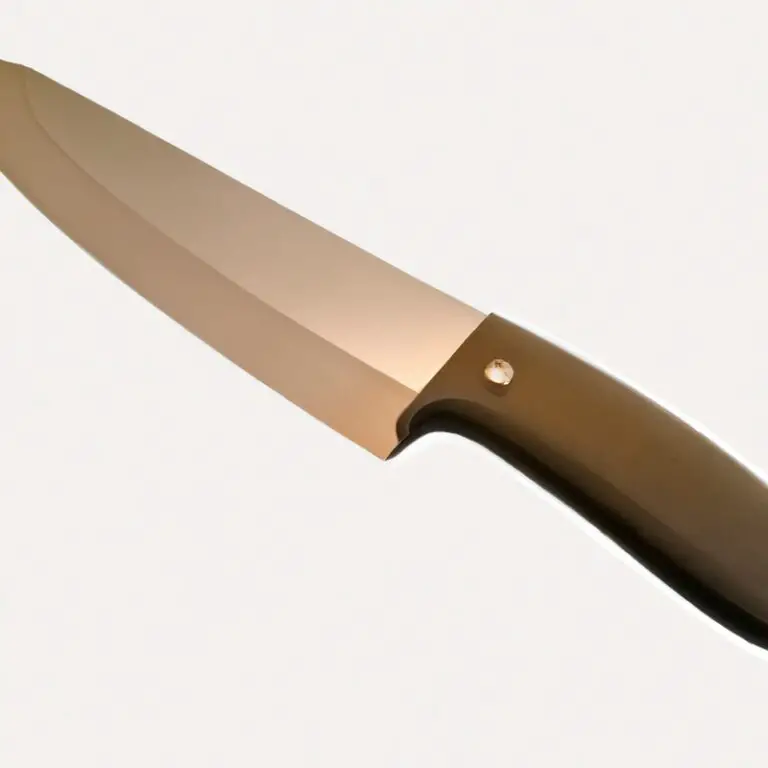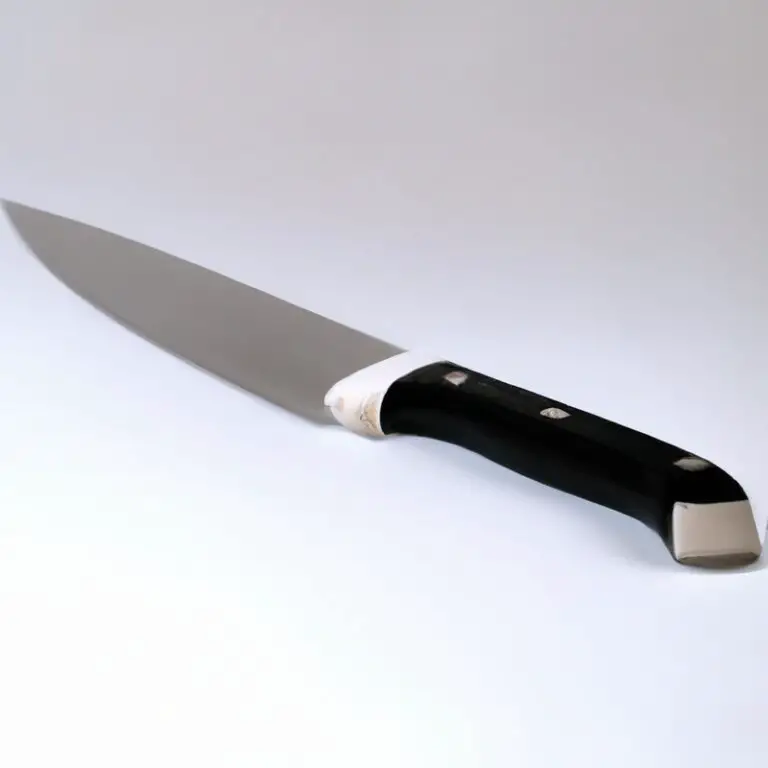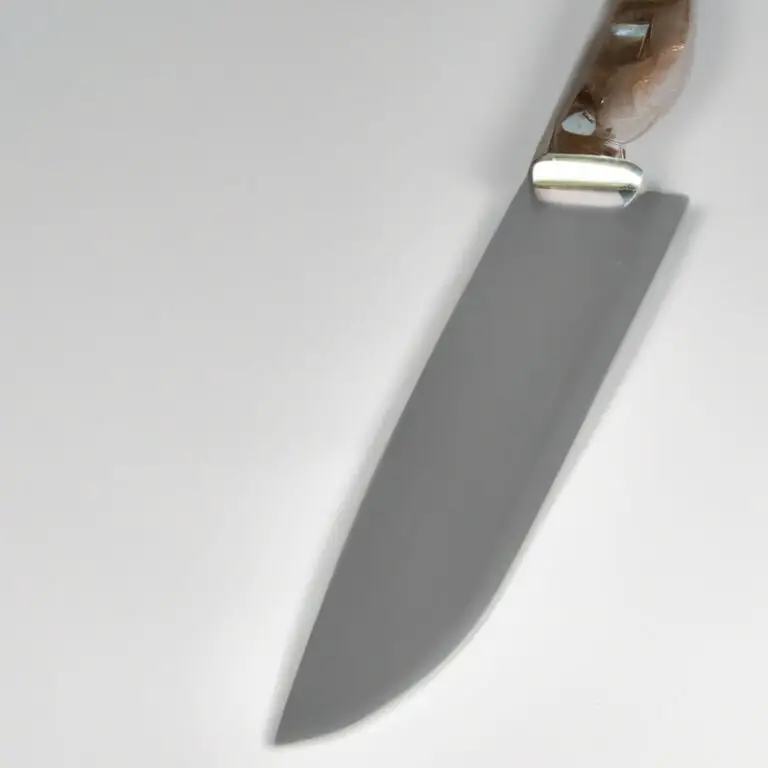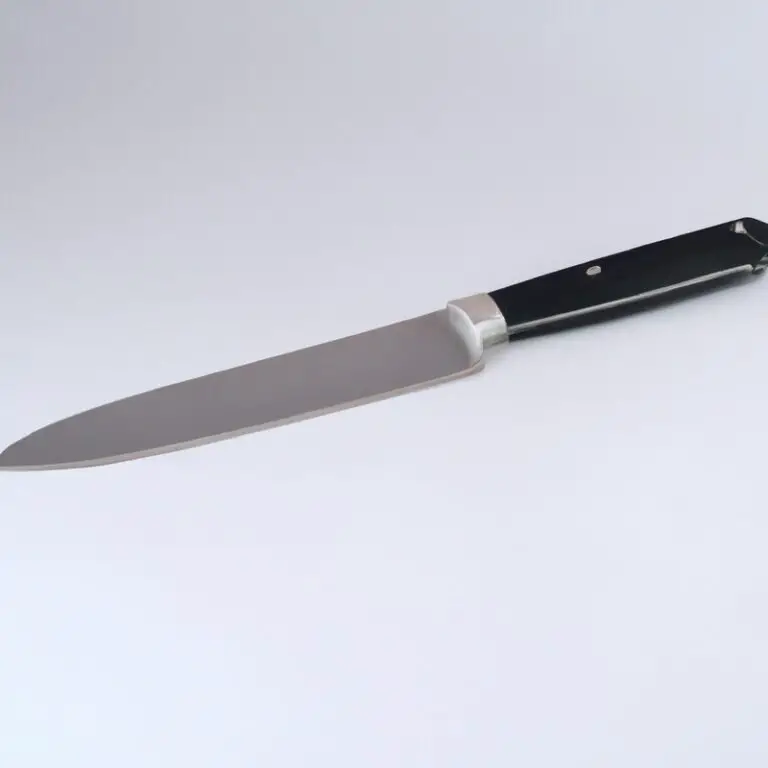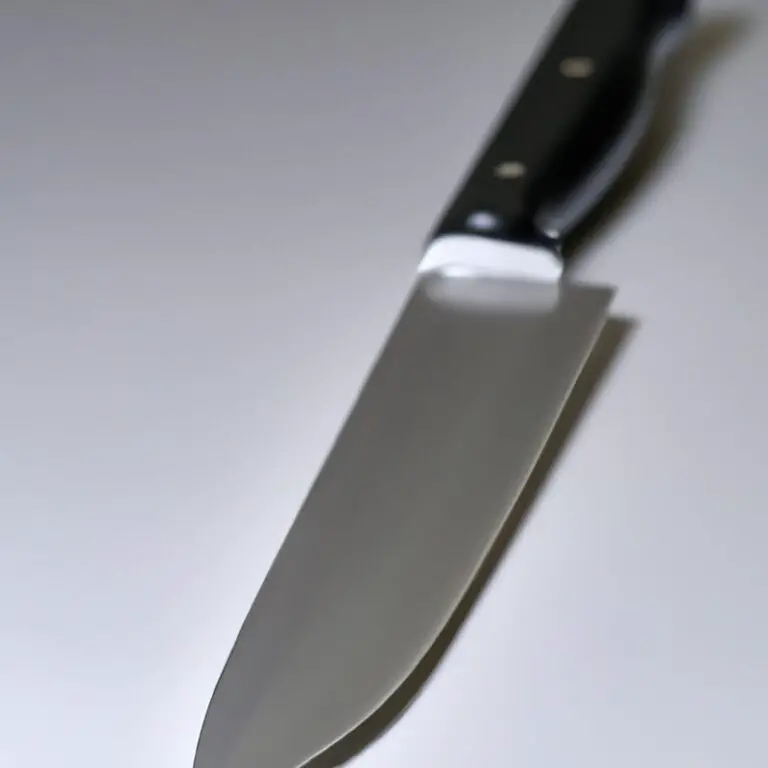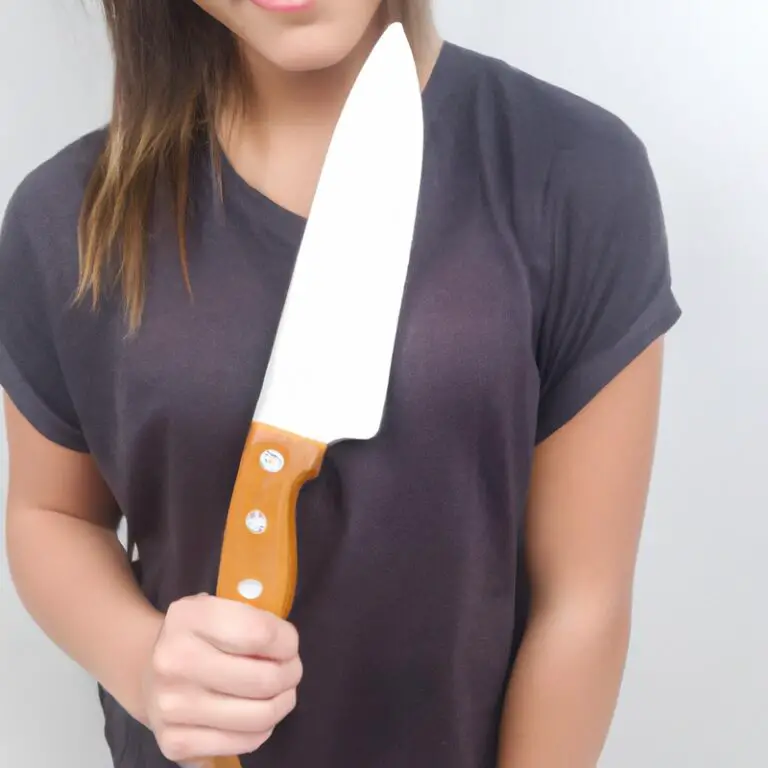How To Protect The Blade Of a Chef Knife During Storage?
Key Takeaways:
- The safest way to store a chef knife is to use a blade guard or a knife block to prevent damage and preserve its sharpness.
- Avoid storing the knife in a drawer with other utensils as it can cause the blade to scratch or blunt.
- Before storing, wash and dry the knife thoroughly to prevent any moisture or rust from forming on the blade.
- Regularly sharpen and maintain the knife to prolong its lifespan and ensure optimal performance in the kitchen.
If you’re a chef, then you know that your chef knife is one of the most important tools in your arsenal. However, when it comes to storage, it can be challenging to keep your chef knife’s blade safe and secure.
The blade of your chef knife is notoriously vulnerable to damage and corrosion, which is why it’s essential to take proper precautions when storing it.
In this article, I’ll be sharing my top tips and techniques for protecting your chef knife’s blade during storage, including cleaning, selecting the right storage location, using magnetic knife strips, and much more. So, let’s get started!
| Method | Pros | Cons |
|---|---|---|
| Knife sheath | Protects the blade from scratches and damage | Can be hard to clean and can trap moisture if not dried properly |
| Magnetic knife strip | Saves counter space and keeps knife within reach | May not work for knives with certain types of metal |
| Knife block | Keeps the blade safely stored and easily accessible | Takes up counter space and can be difficult to clean |
| Blade guard | Can be easily removed and cleaned | May not fit all knife sizes and can be cumbersome to use |
Understanding the materials of your chef knife blade and their vulnerability to damage during storage
The type of materials used to manufacture chef knife blades influences their vulnerability to damage. For instance, blades made from carbon steel are susceptible to rusting and corrosion while stainless steel blades are less vulnerable.
Damascus steel blades are delicate and can be damaged by exposure to moisture.
Ceramic blades are brittle and can easily chip when they come into contact with hard surfaces. Understanding the materials of your chef knife blade is essential in ensuring that you store it appropriately.
It helps to prevent damage, maintain its sharpness, and extend its lifespan.
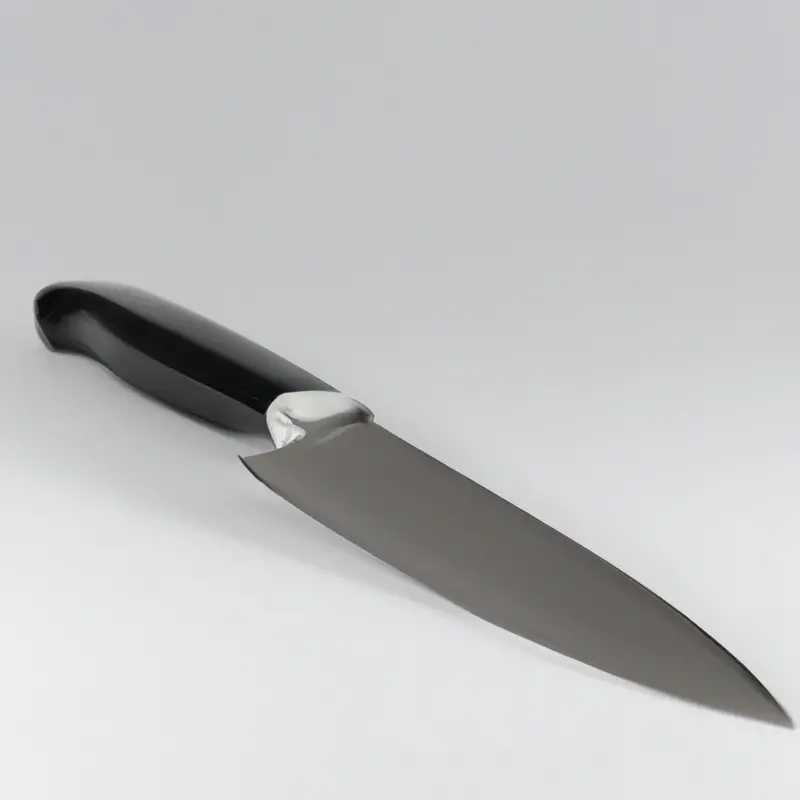
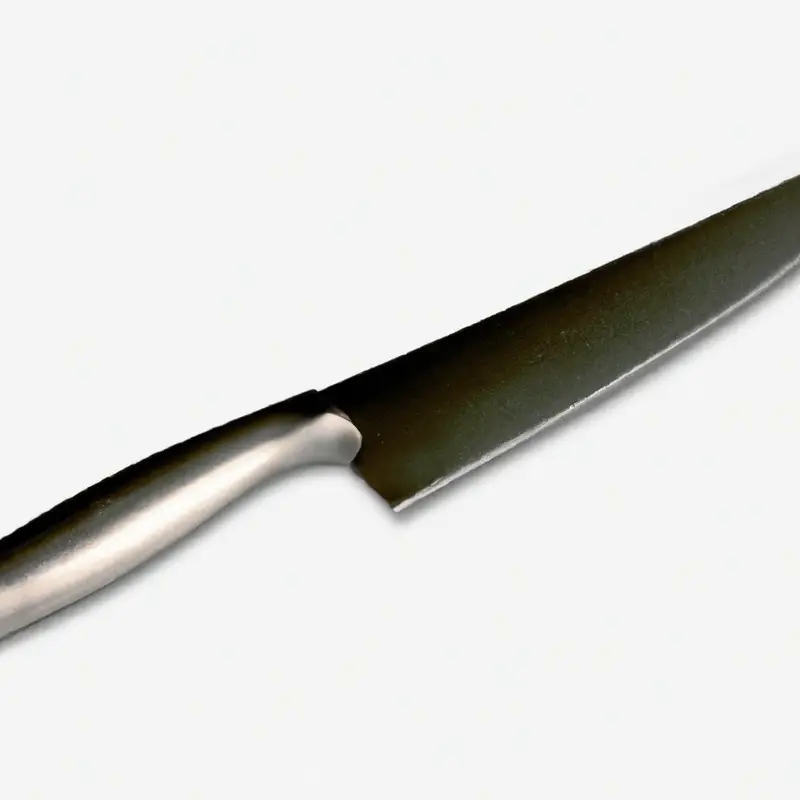
Best practices for cleaning and drying your chef knife before storing it to prevent rust and corrosion
To prevent rust and corrosion, it’s important to clean and dry your chef knife before storing it. Follow these best practices to keep your chef knife in top condition:
- Rinse the blade with warm, soapy water and dry it thoroughly with a clean towel.
- Avoid submerging the entire knife in water as it can damage the handle and dissolve adhesives.
- Use a soft-bristled brush to remove any food particles or debris.
- Dry the blade completely to prevent moisture from accumulating and causing rust.
- Apply a thin layer of food-grade mineral oil or lubricant to protect the blade from rust and corrosion.
- Store the knife in a dry and well-ventilated area, preferably in a sheath or blade guard.
- Avoid storing your chef knife with other kitchen tools that may scratch or damage the blade.
Essential tools and materials needed for protecting your chef knife’s blade during storage
When it comes to protecting your chef knife’s blade during storage, there are a few essential tools and materials that can help. These include a blade guard or sheath, a magnetic knife strip, a knife block or drawer insert, and a microfiber or cotton cloth.
A blade guard or sheath provides a protective cover for your knife’s blade and prevents it from coming into contact with other objects.
A magnetic knife strip allows you to store your knife safely while keeping it within reach. A knife block or drawer insert keeps your knife in a designated spot and prevents it from moving around.
Additionally, using a microfiber or cotton cloth to clean and dry your knife before storing it helps prevent rust and corrosion.
Avoid using harsh chemicals or leaving your knife soaking in water, as this can cause damage to the blade. Investing in these essential tools and materials can help extend the life of your chef knife and keep it in excellent condition for years to come.
How to secure your chef knife with a sheath or blade guard to prevent damage
To prevent damage to your chef knife during storage, it’s essential to secure it with a sheath or blade guard. These protective accessories will shield your knife’s blade from scratches, dings, and other types of damage.
When selecting a sheath or blade guard, make sure it fits the length and shape of your knife’s blade.
Also, ensure that it is made of sturdy materials that can withstand regular use. After using your knife, clean and dry it thoroughly before placing it in its sheath or blade guard.
This will prevent moisture and debris from accumulating and causing rust or corrosion.
Remember, investing in a high-quality sheath or blade guard is a small but important step in protecting your chef knife and ensuring its longevity.
The potential hazards of storing your chef knife with other kitchen tools and how to avoid them
Storing your chef knife with other kitchen tools can potentially damage its blade and pose a hazard in the kitchen. The blade can become dull, nicked, or chipped if it comes into contact with other utensils or hard materials.
To avoid this, it is best to store your chef knife separately from other kitchen tools in a designated knife block, magnetic knife strip, or inside a protective sheath or blade guard.
If you must store your knife with other tools, make sure to place it in a separate compartment or drawer away from hard materials that can damage the blade. It’s always better to ensure the safety of your chef knife to prevent injury or replacing it due to damages caused by poor storage practices.
Tips for selecting the right storage location to prevent damage and keep your chef knife within reach
Selecting the right storage location is crucial for your chef knife’s protection and accessibility. Here are some tips to help you choose the right storage location:
- Store your chef knife separately from other kitchen tools to prevent damage.
- Keep your chef knife and other utensils away from water, moisture, and humidity.
- Avoid storing your chef knife in a drawer or container without a blade guard or sheath.
- Consider using a magnetic knife strip or a knife block with individual slots to secure your chef knife.
- Store your chef knife in a location where it is easily accessible for use, but away from children or pets.
By following these tips for selecting the right storage location, you can prevent damage to your chef knife and ensure its longevity and functionality.
The benefits of using a magnetic knife strip for safe and efficient chef knife storage
A magnetic knife strip offers various benefits for both safe and efficient storage of chef knives. Firstly, it allows for easy access to knives, eliminating the need to rummage through a messy drawer or block.
This, in turn, saves time in food prep and reduces the risk of injury.
Secondly, a magnetic strip keeps knives organized and visible, preventing damage from rubbing against other blades. Lastly, because the blade is suspended in mid-air and not resting on a surface, a magnetic strip helps to maintain the knife’s sharpness for longer periods.
Overall, a magnetic knife strip is a useful investment for any kitchen, providing convenience, safety, and protection for your chef knives.
How to properly wrap and store your chef knife in a drawer or knife block to prevent blade damage
When storing your chef knife in a drawer or knife block, it’s important to take measures to prevent blade damage. Here are some tips on how to properly wrap and store your chef knife:
- Use a knife sheath or blade guard to protect the blade from coming into contact with other kitchen tools.
- If storing your knife in a drawer, place it in a wooden or plastic knife block to prevent the blade from getting banged around.
- If you prefer to store your knife in a knife block, make sure the slot fits the blade of your knife tightly.
- To prevent damage to the blade’s edge, use a soft cloth or paper towel to wrap the knife before storing it.
- Keep your chef knife in a dry and cool place to prevent rust and corrosion.
By following these simple steps, you can ensure the longevity and sharpness of your chef knife while it’s in storage.
The importance of maintaining the sharpness of your chef knife and how to do so without damaging the blade during storage
Maintaining the sharpness of your chef knife is essential for efficient and safe kitchen operations. A dull knife can slip and cause injuries, and it can ruin the quality of your cut.
Storing your chef knife in a safe place will only take you halfway.
Ensuring it remains sharp is equally important. Proper stropping and honing will keep the knife sharp, but always remember to avoid storing it with other kitchen tools as this can lead to blade damage.
Alternatively, use blade guards or sheaths to protect the blade during storage.
A good understanding of the materials your knife is made of is also crucial as it’ll help you choose the right sharpening tools and techniques. Reputable knife sharpening services are also valuable investments.
Regular maintenance will keep your chef knife sharp and durable, enhancing its lifespan and improving your culinary experience.
Best practices for transporting your chef knife to and from work or culinary events to ensure its protection and longevity
Transporting your chef knife can be a risky endeavor, particularly if you’re carrying it long distances. Fortunately, there are various ways to transport your chef knife safely, including using a knife roll, sheath or hard carrying case.
One of the most crucial things to remember when transporting your chef knife is to ensure that the blade is covered or secured in place.
The most obvious way to do this is by placing the knife in its sheath. Make sure the knife is locked in place, so it doesn’t move around during transit.
Avoid wrapping the blade in anything that could damage it, such as paper or cloth.
If you’re using a knife roll, make sure the blade won’t move around when it’s rolled up. Consider investing in a knife roll that has individual pockets for each blade, which minimizes the risk of blades rubbing against one another.
It’s also essential to transport your chef knife separately from other items in your bag or backpack.
Don’t cram items around your knife, as this could result in damage to the knife. Transporting your chef knife safely and securely can prolong its life and ensure that it remains in top condition for longer.
Use a sheath, knife roll, or hard carrying case to keep the blade safe and secure in transit and avoid packing it with other items.
These simple steps can make a big difference in protecting your chef knife during transportation.
Final Verdict
Protecting the blade of your chef knife during storage is essential for maintaining its functionality and longevity. By understanding the materials of your chef knife blade and implementing best practices for cleaning, drying, and securing your knife during storage, you can prevent damage from rust, corrosion, and other hazards.
With the right tools and materials, you can confidently store your chef knife in a safe and accessible location, whether it be a magnetic strip, sheath, or knife block.
By maintaining the sharpness of your chef knife and taking care when transporting it, you can ensure that it remains a reliable and valuable tool for years to come. Remember, proper storage and maintenance practices are not only practical, they’re crucial for keeping your chef knife in top condition.
So take the necessary steps to protect your chef knife blade, and enjoy the many benefits of having a well-cared-for tool at your disposal.

